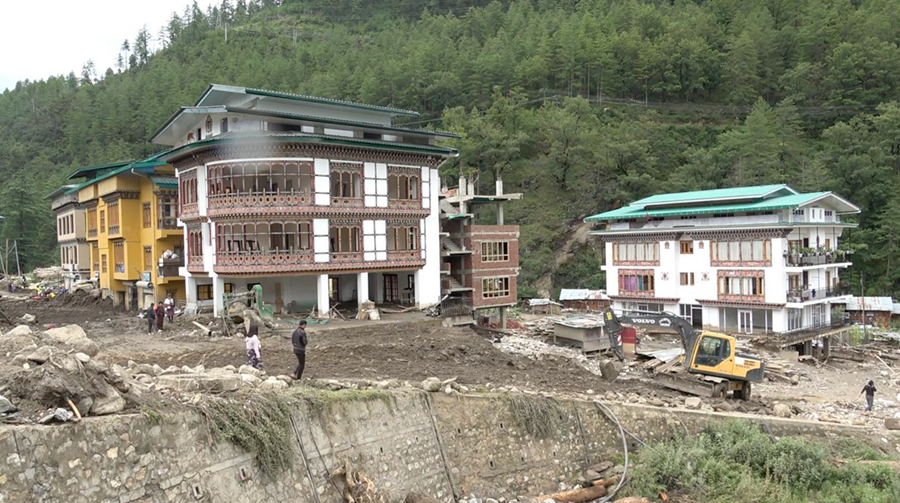
A team from the National Centre for Hydrology and Meteorology and the Department of Geology and Mines went upstream today to assess the cause of the Dechencholing flood. According to officials, they have yet to compile a report on the findings. Meanwhile, in the settlements affected by the flood, officials are prioritising the clearance of the roads, resolving drinking water issues and restoring electricity.
 Thimphu Dzongda, who is the Incident Commander of the recovery effort told BBS that their immediate priority is to clear the road at Dechencholing. He said road connectivity is vital for the livelihoods of residents, particularly those in the Kabesa area.
Thimphu Dzongda, who is the Incident Commander of the recovery effort told BBS that their immediate priority is to clear the road at Dechencholing. He said road connectivity is vital for the livelihoods of residents, particularly those in the Kabesa area.
Meanwhile, efforts are underway to reinforce the bridge at Dangrina, which connects Dangrina to the rest of Thimphu.
Initially, the bridge had a carrying capacity of around 40 metric tonnes. However, the flood has compromised its structure and officials are now permitting only vehicles with a combined weight of up to 18 metric tonnes to ply over the bridge for safety.
Meanwhile, the Thimphu Thromde and the Department of Surface Transport have deployed excavators to reinforce the bridge. Some portion of the bridge had been damaged by the flood.
The Thimphu Dzongda said that future plans include redesigning the bridge.
Regarding the Taba-Kabesa road, the dzongda said there are plans to construct culverts above the hume pipes installed under the road. He added that the culverts will help filter debris and prevent blockages in the hume pipes during similar events.
Regarding the clearing works, the dzongda said that efforts are ongoing. However, he said it is difficult to determine when the works will be completed. He said that the stream at Dechencholing had split into three channels during the flood, carrying a lot of debris.
He added that it is important to determine the cause of the flood and find ways to redirect the stream to its original path.
Devika Pradhan & Karma Samten Wangda
Edited by Tshering Zam







